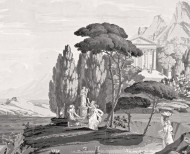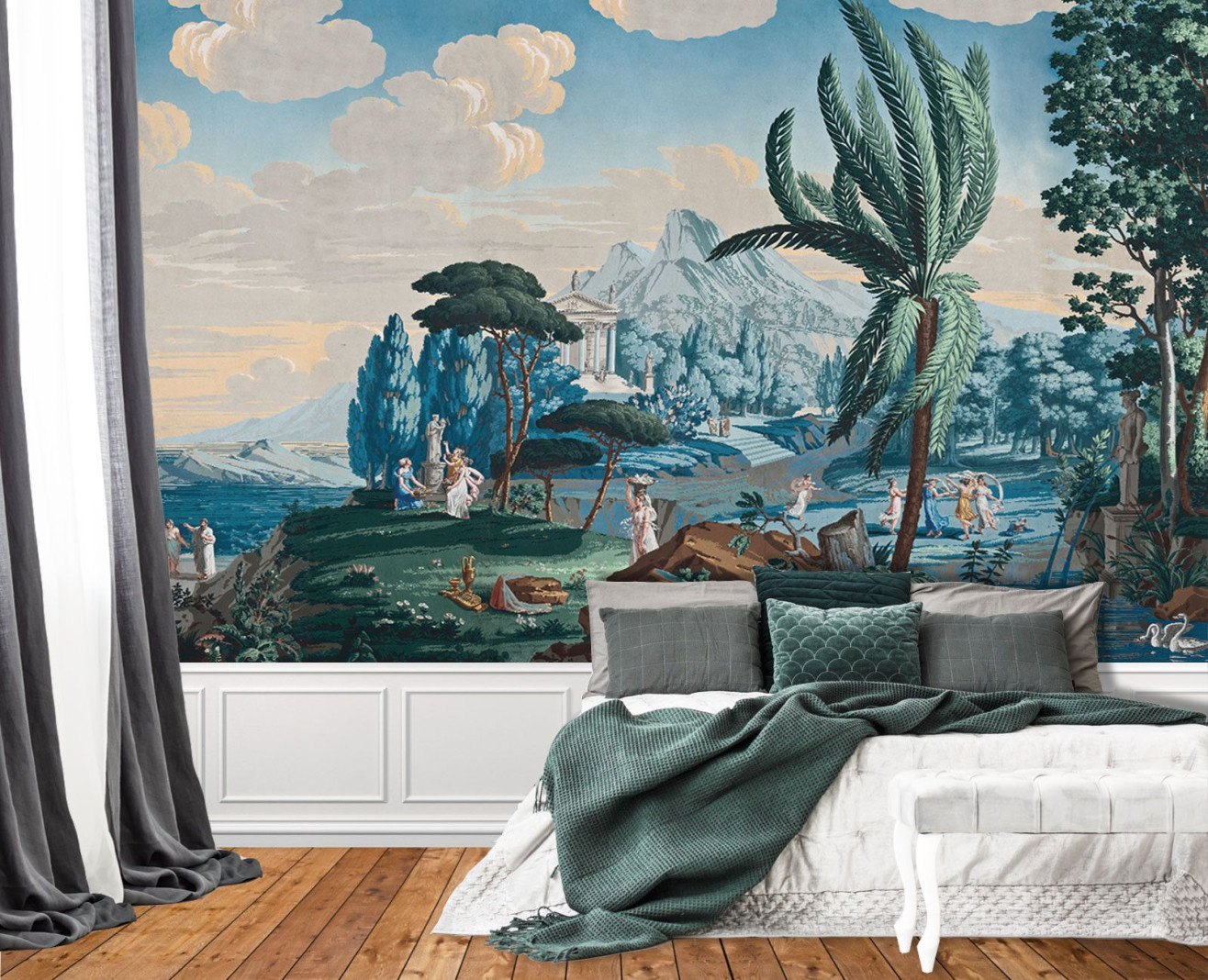No products
- LA PREMIUM finish ideal for walls, kitchen and bathroom
- L’EXTRA finish ideal for woodwork
You still have to place an order for additional boards
(boards are only sold by 3)
Panoramic wallpaper The landscape of Telemachus on the isle of Calypso monochrome . 1818
Manufacturer Joseph Dufour
115,00 €
This panoramic wallpaper was produced by the Dufour Manufacture between 1818 and 1920. Freely inspired by " Les Aventures de Télémaque ", a didactic novel written by Fénelon (1651–1715) for Louis XIV’s grand-son, who was his private pupil. This novel features Telemachus’ imaginary adventures. In search of his father, Ulysses, he is shipwrecked on Calypso’s island. This mural enjoyed a great success in the United States in the early 19th century.
Originally printed in 85 colors on more than 2000 engraved wooden boards, this gorgeous artwork comprised 24 sections. We offer 17 of them, revived and brought up to date thanks to many hours of meticulous, patient digital restoration.
Collection of Musée des Arts Décoratifs de Paris
Photographic credit: Les Arts Décoratifs/ Jean Tholance
Colors
MORE INFORMATION ABOUT LEAD TIMES, click here
Created by Joseph Dufour in 1797, the so-named manufacture is, along with Zuber and Cie, one of the most exceptional of the 19th century regarding the creation of wallpapers, and especially panoramic murals. Ambitious, talented, humanist, and heavily influenced by the French Revolution ideals, Joseph Dufour set up first in Mâcon, then in Paris. At his beginnings, he kept in tune with the style and taste of the time, reproducing drapery patterns on paper. Then, he progressively turned towards literary and exotic themes with the creation of mural panoramics.
Exhibited in Paris in 1806, his first panoramic wallpaper, “Les Sauvages de la Mer Pacifique”, enjoyed great success, and Joseph Dufour was then considered the most revolutionary creator of the time in the art of decoration. From thereon associated to his name, his patterns became famous all over the world, especially in Europe and in The United States.
1818
This panoramic wallpaper appears in the novels of Honore de Balzac (1799-1850), for instance, in the description of the well-off middle-class houses in La Rabouilleuse, or on the walls of the sitting-room of the Maison Vauquer, the infamous boardinghouse, in which most of the action of Pere Goriot takes place: "This room, with the poor wooden floor, is paneled to waist height. The wall above is covered with varnished paper showing the principal episodes in the life of Telemachus, featuring classical figures in color. On the wall between the mesh covered windows, the residents can view Calypso feasting with the son of Ulysses." Balzac writes to the widespread popularity of such panoramic wallpapers at the time, by mentioning and describing them over 100 times throughout La Comédie Humaine.
Calypso’s palace – on the left side of the panoramic wallpaper - is inspired by the neoclassical architecture of the Grand Théâtre de Bordeaux, built by Victor Louis between 1773 and 1780. The building itself is easily recognizable, especially in the Corinthian columns and the statues of goddesses and muses. Overall, the panoramic wallpaper, designed by Xavier MADER, displays an intimate knowledge of Greek art.
Our wallpapers are hung in 3 stages: the preparation of the wall, its pasting, and the hanging. The strips are hung edge to edge and from left to right in the order indicated on the assembly plan supplied with the rolls. To find out more, consult our Hanging instructions page.
Non-woven wallpaper 147g/ square meter
Matching edge to edge
Manufacturing time: 20 business days
Made in France
Owing to the manufacturing process, there could be small variations in colors from one production batch to the next. If possible, avoid buying different parts of the same design several weeks apart.














